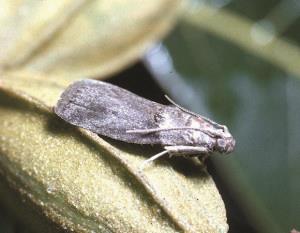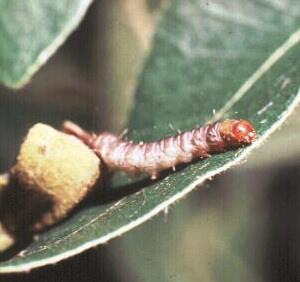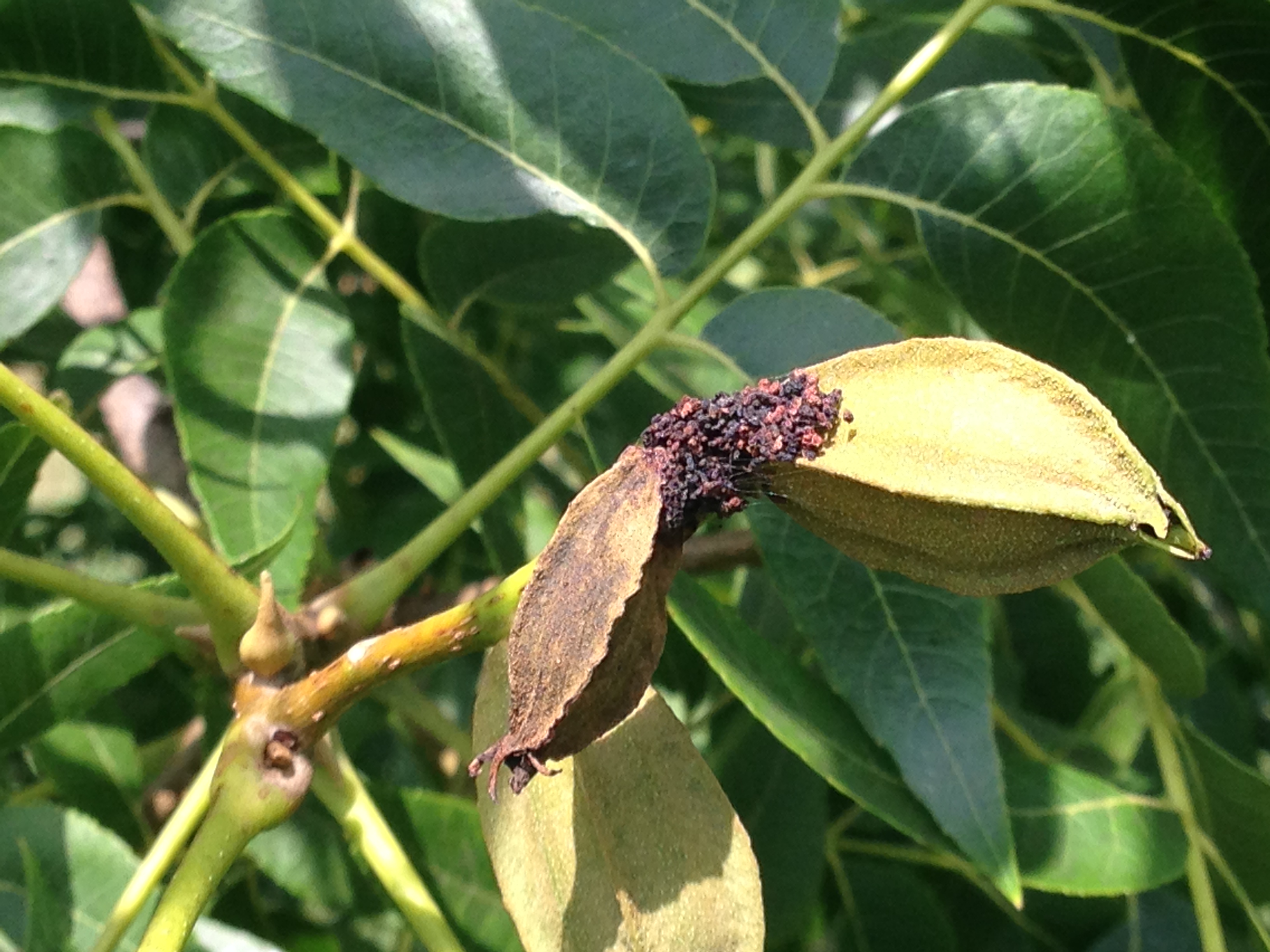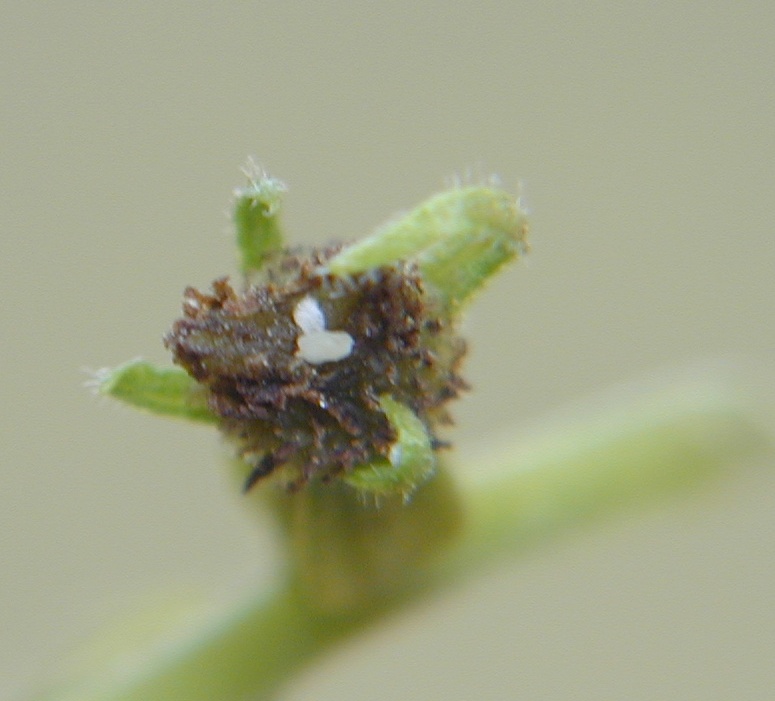Insect Gallery
Insect Details
Pecan Nut Casebearer
Acrobasis nuxvorella
Adult casebearer moths are gray to dark gray, have a dark ridge of scales on the forewings, and are about 1/3 inch in length. Mating and egg deposition occurs during the night, and female casebearers can deposit 50 to 150 eggs during their five to eight day life span. Eggs are small and oval shaped. The first generation of eggs is laid singly at or near the calyx lobes of nuts after pollination. PNC eggs are white when first laid, and then change to red three to five days before hatching. When larvae hatch they are white to yellow in color and feed initially on buds. Full grown larvae are greenish-gray reach about 1/2 inch in length.
In Oklahoma, the pecan nut casebearer completes two to three generations per year. Overwintering larvae develop into moths that emerge from late May to early June. After tree pollination, female casebearer moths begin laying eggs on pecan nuts. These eggs result in first-generation larvae that feed on pecan nuts and generally cause the most damage. Second-generation PNC begin appearing in mid-July. Larvae feed primarily on pecan shucks. Little damage is created from second-generation larvae. Third-generation PNC hatch 30 to 40 days later and feed for a short time (if at all) on shucks. Each small larva forms a tightly woven, protective silken case near a bud or leaf scar for overwintering. These larvae emerge in the spring and feed by tunneling into shoots. Pupation of the overwintering generation occurs in these tunnels formed from feeding, and adults emerge the following spring to deposit the first generation of eggs on pecan nuts. Sex ratios of these moths vary over the season. The proportion of female moth numbers increases over the season. With increased numbers of female moths emerging, damage may increase.
As the larvae grow and move to developing nuts, the will bore into the base of one or more nuts. Black excrement (frass) and silk at the base of nuts indicates larval entry. They remain in the nut and feed for four to five weeks. Full-grown larvae will pupate inside the pecan and emerge 9 to 14 days later.



